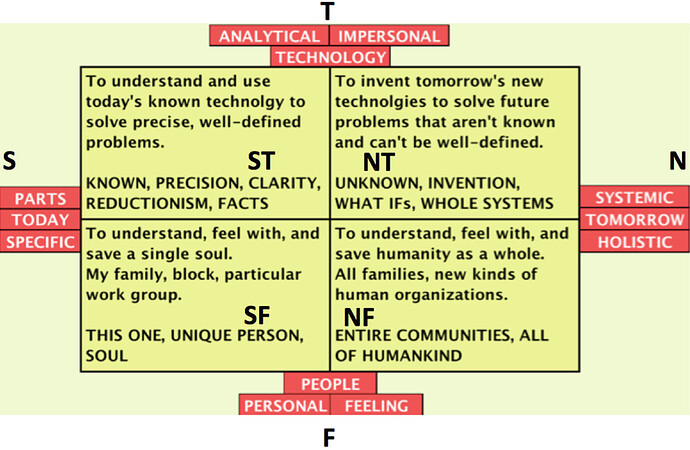Ian Mitroff was a student of C. West Churchman, as was Russell Ackoff. However, Mitroff is 19 years younger, and completed his Ph.D. at U.C. Berkeley in 1967, as compared to Ackoff at the University of Pennsylvania in 1947.
Having the benefit of 20 more years of learning by Churchman – not to mention publishing over 300 articles and 30 books, and presidency of the ISSS in 1992-1993 – gives Mitroff the credibility to speak about systems thinking … extending Ackoff’s work.
From his recent 2021 open access book (coauthored with Ralph Kilmann) …
Appendix 3: What Is a System?
In a series of seminal books spanning a lifetime, no one has done a more commanding job than Russell Ackoff and his colleagues in identifying and laying out the precise definition and nature of Systems.1 It is only fitting that we acknowledge the enormous impact his thinking has had on ours. [p. 81]
1 Ackoff, Re-Creating the Corporation , opcit; Ackoff, Russell L. and Rodin, Sheldon, Redesigning Society, Stanford University Press, 2003; Ackoff, Russell L. and Greenberg, Daniel, Turning Learning Right Side Up, Putting Education Back On Track, University of Pennsylvania Press, Philadelphia, 2003; Gharajedaghi Jamshid, Systems Thinking, Managing Chaos and Complexity,
Nonetheless, at the outset, we have to say that for all its brilliance, in terms of the Jungian Framework, it’s a pure NT account. Accordingly, it needs to be modified to consider how the other Jungian Types view Systems. [p. 82]
For those unfamiliar with the placement into four Jungian quadrants (or the Keirsey Temperament Sorter, or Myers–Briggs Type Indicator), here’s an excerpt on how it relates to systems thinking in Chapter 6.
It’s not that this more common notion of Systems is wrong. Rather, it’s limited in that it leaves out some of their most crucial aspects. For one, it doesn’t account for how different types of people have very different perspectives that not only depend on each other, but have to work together. If they are not able to do so, then a more comprehensive system can’t exist in the first place, let alone accomplish its intended goals. In this sense, the common approach is not Systemic enough in the truest sense of the term.
The approach adopted here is based on the pioneering work of the Swiss Psychiatrist and Psychoanalyst Carl Jung. It pinpoints the different types of activities and processes that are essential if organizations, societies, and now most crucial of all, the entire world are to survive in today’s turbulent environment.
Figure 6.1 outlines four essential sets of activities that all human Systems in one way or another need to accomplish. They fall into four distinct quadrants. More than ever, the leaders of all organizations and institutions are challenged with ensuring that the four quadrants not only support one another, but work together seamlessly if they are to be successful in realizing their intended goals. Acting alone, none of them can succeed by themselves. [p. 37]
[…] The left-hand side is called Sensing or S for short. Sensing Types—people whose S side of their personality is strongly developed—prefer to gather information in terms of their senses, or more generally, scientific data. In fact, anything that isn’t ultimately based on or reducible to “hard data” isn’t considered to be “valid information.”
The right-hand side “Wholes” stands for those who instinctively prefer not to break something down into its so-called independent parts. Instead, they instinctively look at the whole—The Big Picture—of any entity or situation. If they consider the “parts,” it’s not only to draw out all of the interconnections between them, but to create a whole whose value is greater than the “product” of the values of the individual parts. In other words, they don’t look at anything in isolation. Finally, the right-hand side also represents the use of nontraditional concepts, innovative ideas, and measures to assess the performance of a system. [pp. 38-39]
[…] In terms of the Jungian Framework, the top of the vertical dimension is called Thinking or T for short. Thinking Type personalities—people whose T side is strongly developed—prefer to analyze situations impersonally. In sharp contrast, Feeling or F Types respond to every situation in intensely personal terms, e.g., “likes and dislikes.” It’s not that one Type is “right” and the others are “wrong,” but that all of them depend upon and need one another in order to pick up and respond appropriately to all of the factors that are involved in every situation.
Putting the horizontal and vertical dimensions together results in the four quadrants, or Personality Types, in Fig. 6.1. [p. 39]
Returning to Appendix 3 …
Thus, from the perspective of NT, a System is an intentionally designed, systematically organized, whole entity (e.g., an automobile, computer, smart building, etc.) that has one or more essential functions so that an individual and/or groups of people are thereby able to realize a set of important purposes. Furthermore, the functions, not the parts, are critical in defining a System.
Notice immediately how the different Types define “purposes.” For STs, purposes are akin to “measurable objectives” that one wishes to accomplish. For NFs, purposes are deep expressions of the fundamental feelings and values of an entire community. For SFs, they are the intensely personal values that both define and unite one’s immediate families and friends. The point is that for Feeling Types, purposes are not impersonal aims and/or objectives. [p. 82]
So, for a broader definition of “systems thinking”, we might acknowledge the variety of (Jungian) types of people in the world.
Reference
Mitroff, Ian I., and Ralph H. Kilmann. 2021. The Psychodynamics of Enlightened Leadership: Coping with Chaos. Management, Change, Strategy and Positive Leadership. Cham: Springer International Publishing. https://doi.org/10.1007/978-3-030-71764-3.

